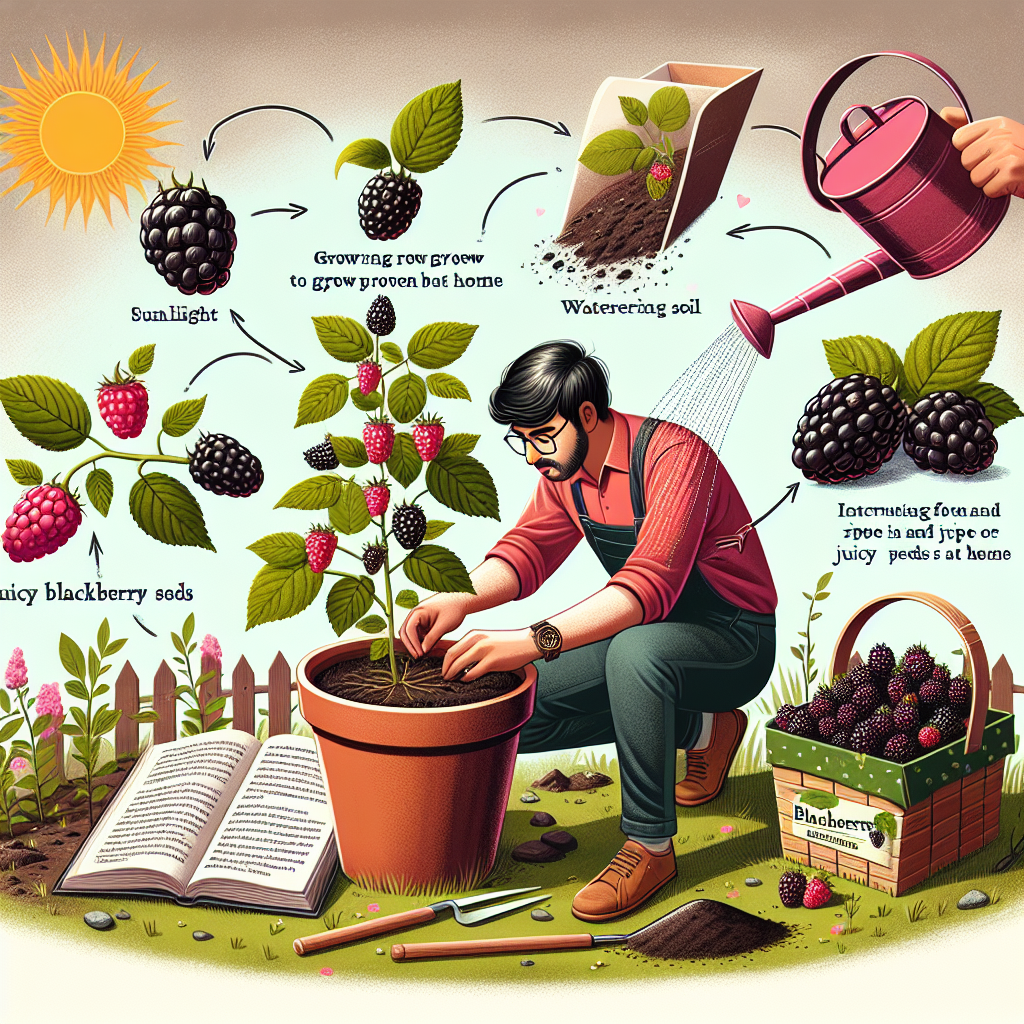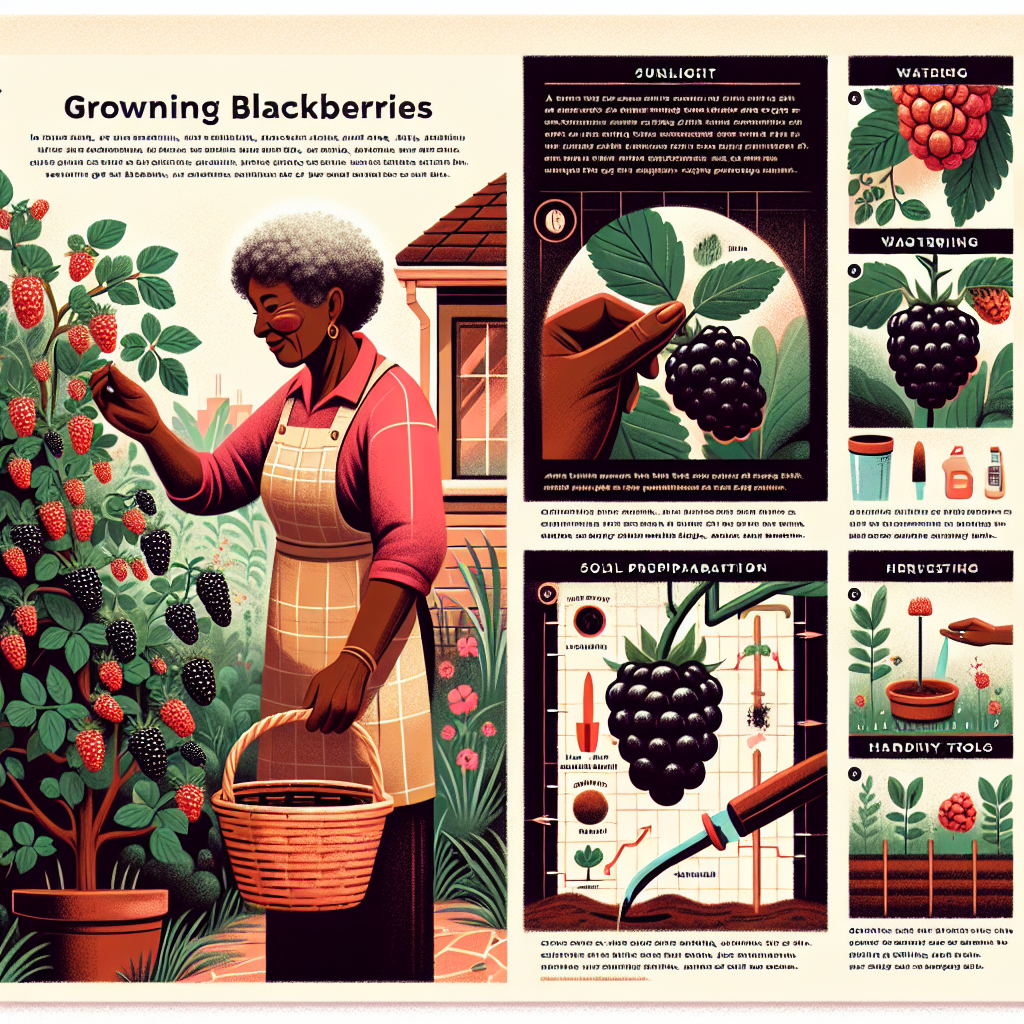Unlocking the Secrets to Growing Juicy Blackberries at Home
Blackberries are one of nature’s sweetest gifts, bursting with flavor and health benefits. Growing your own juicy blackberries at home can be a rewarding and delicious experience. With the right knowledge and techniques, you can have an abundant harvest of these succulent fruits right in your backyard.
Choosing the Right Varieties:
To start your blackberry growing journey, it’s important to select the right variety for your climate and growing conditions. There are three main types of blackberries: erect thornless, erect thorny, and trailing thorny. Erect thornless varieties are ideal for home gardens as they are easy to manage and harvest.
Some popular erect thornless varieties include ‘Apache’, ‘Navaho’, and ‘Arapaho’. These varieties thrive in full sun but can tolerate partial shade. Trailing types like ‘Triple Crown’ or ‘Black Satin’ work well in regions with mild winters, while erect thorny varieties like ‘Chester’ or ‘Hull’ are suited for cooler climates.
Preparing the Soil:
Blackberries prefer well-drained soil with a pH level between 5.5 and 6.5. Before planting, test the soil to determine its pH level and make any necessary amendments to ensure optimal growing conditions.
Start by removing all weeds from the planting area as blackberries do not compete well with other plants for nutrients. Clear away any debris or existing vegetation that may hinder growth. Dig a hole that is wide enough to accommodate the roots of the blackberry plant, ensuring it is at a depth similar to what it was grown in its nursery pot.
Planting Techniques:
The best time for planting blackberries is during early spring when the soil is workable but not waterlogged. Space each plant about 3-4 feet apart in rows that are around 8 feet apart. This allows sufficient room for the canes to grow and spread.
Make sure the crown of the blackberry plant is level with or slightly above the soil surface. Fill in the hole with soil, firming it gently around the roots to eliminate air pockets. Water thoroughly after planting to settle the soil and provide essential hydration for the newly established plant.
Training and Pruning:
Blackberries grow on canes that emerge from roots called primocanes. In their first year, these canes do not produce fruits but rather focus on vegetative growth. It’s important to train and prune your blackberry plants to maximize fruit production.
During late winter or early spring, remove weak or damaged canes, leaving only 4-6 healthy ones per plant. These canes are known as floricanes and will produce berries in their second year. Tie them to a trellis or wire system for support and ease of maintenance.

As summer progresses, routinely remove any additional canes that sprout from the base of your blackberry plants. This prevents overcrowding and ensures adequate airflow which helps prevent disease.
Watering and Fertilizing:
Blackberries require regular watering throughout their growing season. Aim for around an inch of water per week, either from rainfall or supplemental irrigation. To avoid overwatering, check the moisture level of the soil before watering.
Apply a balanced fertilizer in early spring before new growth appears. A slow-release fertilizer or organic compost are good choices for providing essential nutrients to your plants throughout the growing season.
Pest and Disease Management:
Like any other plant, blackberries are susceptible to pests and diseases. Common pests include aphids, spider mites, fruit flies, and Japanese beetles. Regularly inspect your plants for signs of infestation such as distorted leaves, webbing, or holes in the foliage.
Use insecticidal soap or neem oil spray to control pests naturally if necessary. Installing physical barriers like netting or row covers can also help deter birds or mammals from devouring your precious fruit.
Blackberries are prone to diseases such as powdery mildew, cane blight, and root rot. To manage these diseases, practice good sanitation by removing any infected canes or plant debris promptly. Apply fungicides if necessary and ensure proper airflow by not overcrowding plants.
Harvesting the Bounty:
The anticipation of harvesting juicy blackberries is truly exciting. The fruit should be plump, glossy, and easily detached from the plant when it’s ripe. Gently pull the berries off their stems, being careful not to crush them.
Blackberries ripen over a period of several weeks, so it’s best to harvest them every few days to maintain optimal flavor and freshness. Store freshly picked berries in the refrigerator and consume them within a week for peak taste.
In conclusion, growing your own juicy blackberries at home is an enjoyable experience that rewards you with luscious fruits packed with flavor and nutrients. By selecting the appropriate varieties, preparing the soil, practicing proper training and pruning techniques, managing pests and diseases effectively, and harvesting at the right time – you’ll be well on your way to a bountiful blackberry harvest that will make your taste buds sing!













